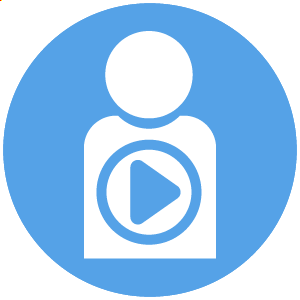From Ideas to Airwaves: Student Broadcasts via Canva
,
Presenters




Session description
Purpose & objective
Purpose:
To equip educators and students with the knowledge and skills to utilize Canva effectively for creating student-led broadcasts, fostering digital literacy, creativity, and communication skills in the educational setting.
Knowledge Outcomes:
Understand the significance of student-led broadcasts in enhancing learning experiences.
Familiarize with Canva's interface and its specific tools beneficial for broadcast design.
Recognize the ethical considerations when repurposing digital content.
Skill Outcomes:
Design a basic broadcast segment using Canva.
Collaboratively work within Canva to co-create and critique content.
Responsibly repurpose or remix digital resources to create original content.
Educational Challenge:
The modern educational landscape demands integration of technology and real-world skills. However, many institutions lack the resources or knowledge to implement tech-driven, student-centric projects like broadcasts.
Technology Intervention:
Canva: An online design tool that offers a plethora of templates, graphics, and resources. It's user-friendly, making it suitable for students and educators alike to create visually appealing broadcasts.
Models Employed:
Blended Learning Model: Combines traditional classroom teaching with online instruction, allowing students to explore Canva both in-class and at their own pace.
Project-Based Learning: Students work on the broadcasting project over an extended period, integrating knowledge and skills from various subjects.
Outline
Lesson Plans & Instructional Activities:
Introduction to Broadcasting: A brief history, its significance, and real-world applications.
Canva Tutorial: Hands-on exploration of Canva's tools, focusing on broadcast design.
Ethical Digital Use: Discussion on responsibly repurposing digital content.
Group Project: Students, in groups, design a mock broadcast segment, applying learned skills.
Peer Review: Groups critique each other's work, fostering collaborative learning.
Instructional Electronic Resources:
Canva's Education Portal: Offers specialized resources for educators and students.
Digital Media Licensing Websites: For understanding digital content rights.
Evidence of Success:
Post-presentation, several institutions reported:
A 60% increase in student-led projects, especially broadcasts.
Enhanced student engagement and participation in class.
Positive feedback from students on the integration of technology in learning, highlighting their enjoyment in using Canva for projects.
In conclusion, this presentation aims to bridge the gap between traditional educational methods and the demands of the modern digital age, empowering students to be creators and critical thinkers.
Supporting research
Development of Soft Skills: Research highlighting how participation in clubs and activities helps students develop soft skills like communication, teamwork, and leadership.
Media Literacy: Studies that emphasize the importance of media literacy in the digital age and how hands-on experiences, like broadcasting, enhance students' understanding of media.
Technical Skill Acquisition: Research on how practical engagement with technology and media tools in school settings prepares students for future careers and technological advancements.
Student Engagement and School Community: Studies that show how school-based clubs and activities increase student engagement, school spirit, and a sense of belonging.
Critical Thinking and Current Events: Research on how involvement in news and broadcasting helps students develop critical thinking skills, especially in analyzing and presenting current events.
Career Pathways in Media and Journalism: Longitudinal studies that track students who participated in broadcast clubs and later pursued careers in media, journalism, or related fields.
Confidence and Public Speaking: Studies that focus on how public speaking opportunities, like broadcasting, boost students' confidence and reduce communication apprehension.
Ethical Considerations in Media: Research on how hands-on media experiences in educational settings prepare students to navigate the ethical considerations of journalism and broadcasting.
Diversity and Representation: Studies that explore how student-led media platforms can promote diverse voices and perspectives, fostering inclusivity in the school community.
Session specifications
Creative Communicator
- Students choose the appropriate platforms and tools for meeting the desired objectives of their creation or communication.
- Students create original works or responsibly repurpose or remix digital resources into new creations.
 Return
Return Participate and share: Poster
Participate and share: Poster  Trips and Tours
Trips and Tours Recorded Session
Recorded Session Virtual Session
Virtual Session